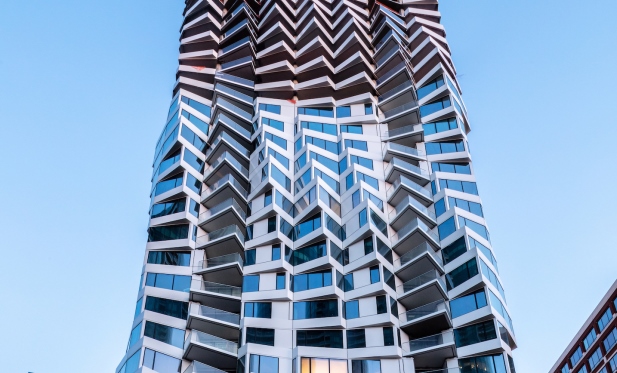 IPO offerings will give San Francisco employees newfound wealth for a home, perhaps at MIRA (credit: Jason O'Rear).
IPO offerings will give San Francisco employees newfound wealth for a home, perhaps at MIRA (credit: Jason O'Rear).
SAN FRANCISCO—Following a lackluster first quarter for housing market activity in the Bay Area, potential impacts around Lyft's, Uber's and Pinterest's already filed IPOs, and other anticipated IPOs have started driving buyer and seller behaviors. Most notably, while inventories increase across the region, San Francisco sellers are holding back, according to research by Compass Real Estate.
A look back at the first quarter activity suggests buyer hesitation, which started in second half of 2018 and continued into early months of 2019, bringing home sales down 10% below last year's levels. The largest monthly decline, however, occurred in March when sales dropped 14%, compared to 7% and 6% respectively in January and February.
In most all Bay Area regions, except Alameda, first quarter 2019 was the slowest in last five years. The slump in sales activity resulted from many factors, almost too many to count, with weather bringing the last punch, says Compass.
Nevertheless, homes priced $2 million and higher experienced relatively larger year-over-year declines in sales activity, while homes priced below $1 million finally reversed the double-digit declines that characterized 2018, declining at the slowest rate compared to higher-priced sales. Improvement in sales of homes priced below $1 million was helped by year-over-year increases in sales in San Mateo and Santa Clara–the first annual increase after at least 26 months of declines which sometimes reached as much as 40% to 60%, according to Terradatum Inc. with data provided by local MLSes.
While higher-priced sales did experience a relatively larger drop off in activity compared to 2018, higher-priced sales still trend above 2017 levels and the years prior. There was a surge in sales of homes priced above $2 million last year. Sales activity nearly doubled between the summer of 2017 and 2018, peaking in May 2018.
San Mateo and Santa Clara did see a jump in sales of homes priced below $1 million, both up 8%, which may suggest buyers are responding to anticipated IPO impacts. However, these were also the areas with a robust buildup in for-sale inventory of homes priced below $1 million starting in fall of last year. Thus, availability of the inventory may have pulled in buyers who have been desperately waiting for more affordably priced homes.
These sellers seem to be responding to Lyft and Uber and potentially other IPO filings. For example, while Santa Clara averaged 30% more inventory in the first quarter, San Mateo sellers tested out the market between November and January, driving inventory up an average of 21% above last year, then driving inventory down 10% again in March.
San Francisco sellers responded the same way. After the first annual increases in 25 months between October and December, inventory declined again by 32% year-over-year in February and March–the largest declines across the region among homes priced below $1 million. However, San Francisco sellers of all price ranges decided to hold off on listing homes, whereas there were more sellers of higher-priced homes across all other Bay Area regions.
While anticipations are running high on how Lyft and Uber IPOs may affect Bay Area housing markets, particularly San Francisco, median home prices remain below last spring's high. Of course, a seasonal increase in home prices from January lows is common across the Bay Area region, San Francisco and Marin experienced a relatively higher jump than in other areas, with San Francisco jolting 16%, Marin 21% and the overall Bay Area 12%. Still, none of these suggest any trends as seasonal jumps of that magnitude have been historically consistent, says Compass.
For buyers, the Transbay district is getting increased demand from thousands of employees looking to live closer to work. And, the upcoming IPO offerings will likely give thousands of San Francisco employees newfound wealth to perhaps purchase new homes.
MIRA is located within a small radius of many of these employers in the Transbay neighborhood. Construction of the 400-foot tower began in mid-2017 and has progressed steadily since, with occupancy slated for late 2019. The facade's installation has been underway for the last seven months and now clearly shows the spiraling design that will punctuate the skyline.
“It has been exciting for us to watch this beautifully designed new tower rise from the ground and take shape,” Carl Shannon, senior managing director at Tishman Speyer tells GlobeSt.com. “MIRA is just as stunning in reality as the renderings made it out to be, and we're proud to be able to contribute this project to San Francisco's evolving cityscape.”
MIRA's one bedrooms (658 to 832 square feet) are expected to start in the $1 million range, two bedrooms (1091 square feet) in the lower half of the tower will likely start in the $1.1 million range, corner two-bedroom units (1,107 to 1,491 square feet) will start in the high $1.6 million range, city and water view two-bedroom units (1,392 to 1,534 square feet) will likely start in the $2.2 million range and corner two-bedroom tower homes with unobstructed water and Bay bridge views will start in the $2.6 million range, GlobeSt.com learns.
© Touchpoint Markets, All Rights Reserved. Request academic re-use from www.copyright.com. All other uses, submit a request to [email protected]. For more inforrmation visit Asset & Logo Licensing.







